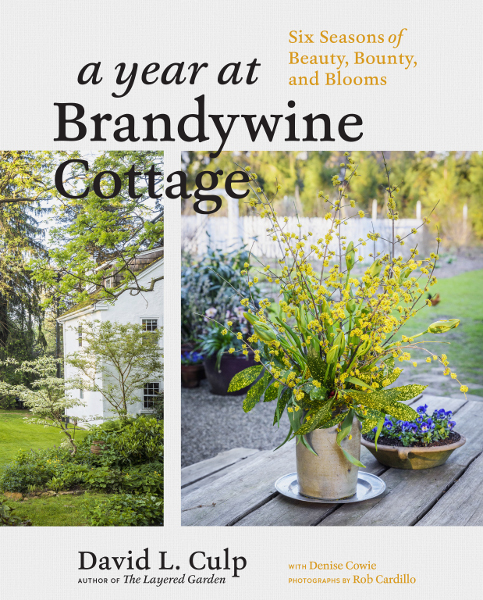
Photograph copyright Rob Cardillo
.
If you have any comments, observations, or questions about what you read here, remember you can always Contact Me
All content included on this site such as text, graphics and images is protected by U.S and international copyright law.
The compilation of all content on this site is the exclusive property of the site copyright holder.
A Year at Brandywine Cottage, a book review
Wednesday, 29 April 2020
I love to visit gardens. Doesn't matter when - I remember touring a garden after dark, by flashlight, in case we might not be able to do so the next day. I've visited gardens in winter, being told "Oh, if only you were here in (fill in time) you could have seen (fill in plant) looking splendid." In fact, it is often rare to visit a garden without being told you really should be there last week / next week. Visits to gardens not your own are a snapshot, a vignette of a moment in time. Right now, in the days of Covid-19 I'd take whatever I could get. Because we are all told to sequester at home and the public gardens I am wont to visit are closed to visitors. All of which makes
a year at Brandywine Cottage; Six Seasons of Beauty, Bounty, and Blooms
by David L. Culp with Denise Cowie such a wonderful book to review.

Photograph copyright Rob Cardillo
Firstly, the book is a delightful read, regardless of the conditions keeping us all at home. A superb gardener, David has a gift for explaining things, something brought to the fore whenever I hear him lecture. Not all speakers are good writers. David does both, with clarity.
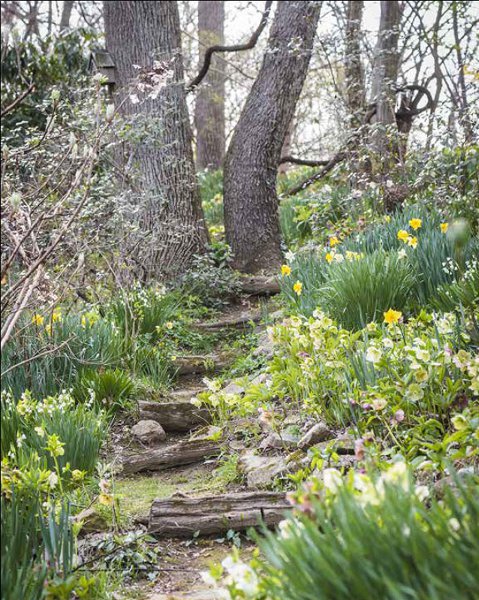
Photograph copyright Rob Cardillo
To begin, in the Prologue there is an explanation of why he considers the year as having six seasons. David is not the first to further divide our traditional spring, summer, fall, winter. He credits Karl Foerster, renown German horticulturist (who gave us Rudbeckia 'Goldsturm') with discussing first and second spring, first and second fall. After all,
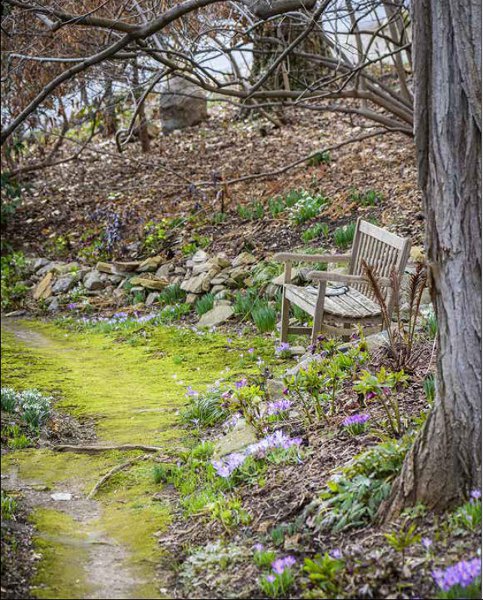
Photograph copyright Rob Cardillo
February with its first flowers is still winter. March and May are hardy identical.
Opening with Early Spring, we're offered a tour of February's flowers. The bulbs: early crocus, winter aconites, most especially a diversity of snowdrops - used in the ground, in containers, in a vase. He does love his snowdrops, as do all the other galanthophiles who gather for the annual Galanthus Gala.
Gardeners, I've noticed, love to eat. How many gardener tours revolve around where we'll break for lunch. There's discussion (mind you, we're still in February) about familial food traditions, and mentioning that A Year at Brandywine Cottage includes recipes, and the hope that you'll try some of them. First off, a Valentine Day's recipe for Coeur à la Creme with raspberries, both frozen and fresh.
March takes us into hellebore heaven, one of David's early horticultural passions. Daffodils, dainty and petite, heirloom and species. I must make a comment. Thoroughly filled with images from modest in size to full page, they are well composed, carefully framed, and excellent for taking us down the garden path. But they are not as crisp as would be if coated stock was used to print the book. It is always a balancing act between publishing costs and retail price.
Along with the garden, beginning to stretch and awaken, the weeds (plants growing in places we don't want them) start to grow too. Perhaps the recipe for a salad of dandelion greens with hot bacon dressing
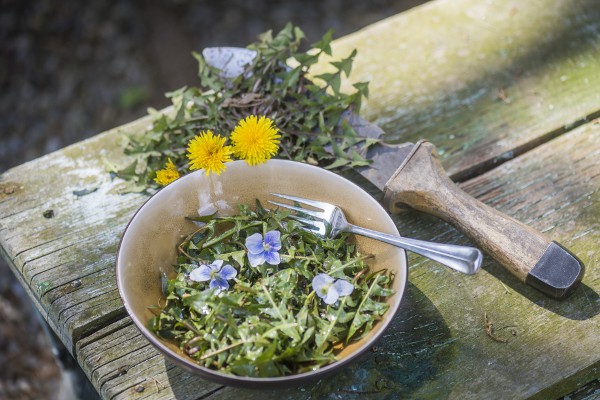
Photograph copyright Rob Cardillo
or simple salad of a dandelion greens will change your mind as to what's a weed.
Late spring, second spring, arrives with a rush in April, a torrent of unfolding flowers and awakening greenery. There's a paean to tulips, which David names as jewels in the garden. Not only in the flower beds, the gravel garden, the ruin garden, but also in
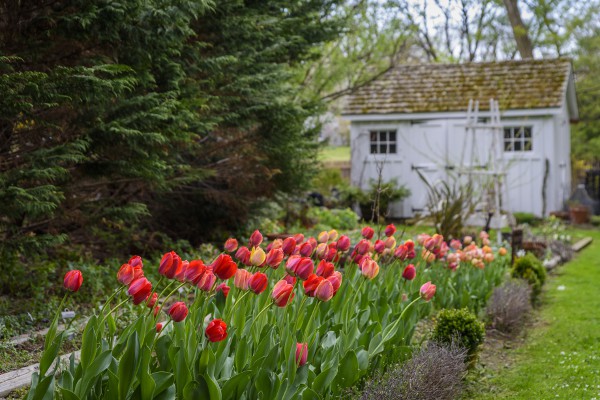
Photograph copyright Rob Cardillo
the cutting garden, "a luxury everyone should have if they have the space."
He does mention that over the years his schedule for spraying deer repellent has morphed from once a month to once a fortnight, to twice a week . . . and soon, he expects, the deer will find his tulips, now that they've eaten his hostas.
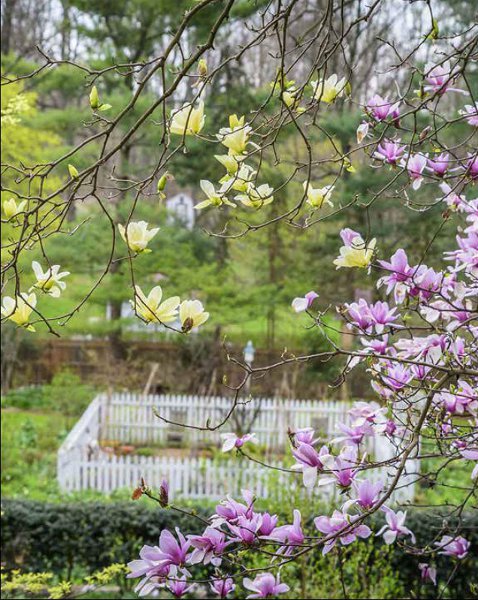
Photograph copyright Rob Cardillo
There are conversations - about his bulldogs, different kinds of peonies, about roses, much about iris, flowers to cut but nothing formal or studied, always a casual country style arrangement of flowers in a jug, classic watercress tea sandwiches. And nearly seamlessly we're in summer. Potted plants. The Veg (David's name for the vegetable garden). June. July. August takes a detour of sorts. There's a multi-page glossary of water-wise plants for dry places, just the name and a couple of sentences that briefly describe and what makes them special. Not solely for August either, just plants that do not need supplemental watering..
September brings some pairs of pictures, showing how the garden looked in a drier year and in one that was rather wet. There's discussion of favorite weeds, plants introduced to the garden that perhaps grow rather too well. such as ostrich fern (but you can eat the fiddle heads in spring), summer phlox and lungwort.
October and the fruitful garden - from rosy red rose hips to the light catching fly-away seeds of Asclepias. The story of design and planting of a little meadow. Late fall, second fall. Leaves begin to turn as the seasons turn to November. Time to plant bulbs, both in the ground and in containers. Time to bring in any houseplants that have not already done so. And each month's chapter concludes with a recipe or two.
December. Winter. Short dark days that makes holiday festivals of light bringing so welcome. Candles and bonfires, Christmas lights indoors and out. Arrangements of branches and berries, Osage oranges collected last fall - nothing dainty but overflowing to warm the soul. The patterns of different evergreen shrubs and conifers. A recipe for a warming vegetable soup. Turning, ever turning, the year comes around to January. The garden is refined with a dressing of snow. A pair of snow-dusted Adirondack chairs become an objet d'art. But gardeners never cease gardening, so there's a delightful story of how the stone basement steps became staging for a collection of clivia and other tender plants. It only took replacing the old wooden cellar doors with French doors, and sliding glass doors at the foot of the stairs to maintain cool temperatures. And some grow lights too.
The whole book is like this - a month by month visit with a passionate gardener happily telling you about what he grows, how it does, what he's learned. How he got to this point in his life, with little stories of his childhood, his friends, gardens he has visited, and more. Plus recipes, don't forget the recipes.
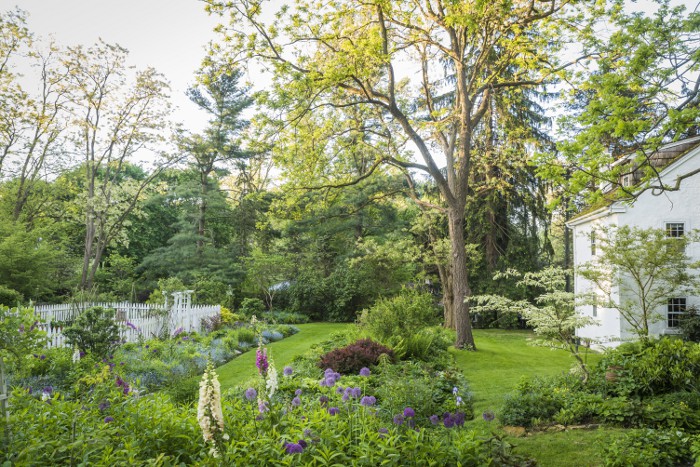
Photograph copyright Rob Cardillo
I would be remiss if I did not mention that I know both David Culp and Rob Cardillo. We don't see each other often, but each time it is as if there has not been any interlude. A Year at Brandywine Cottage is a conversation that takes the reader though the year, informed by one and illustrated by the other.
A Year at Brandywine Cottage
by David L. Culp with Denise Cowie
Photographs by Rob Cardillo
published by Timber Press, Inc., Portland, Oregon
Hardback, $35.00, ISBN: 978-1-60469-856-5, 2020
A review copy of this book was provided by the publisher.
Back to Top
Back to April
Back to the main Diary Page